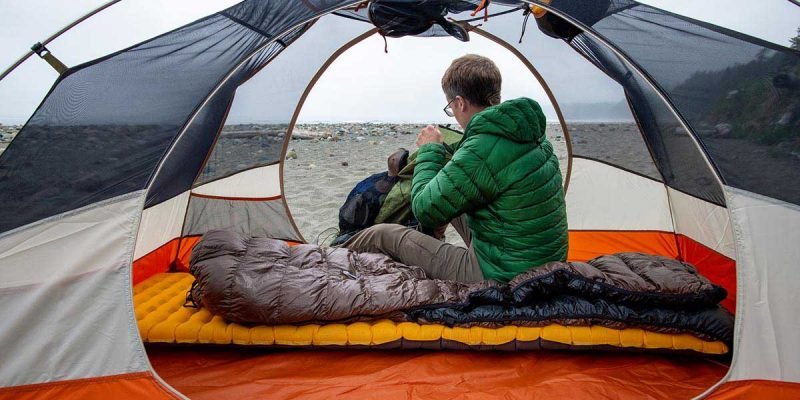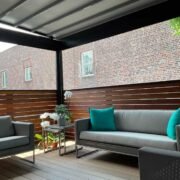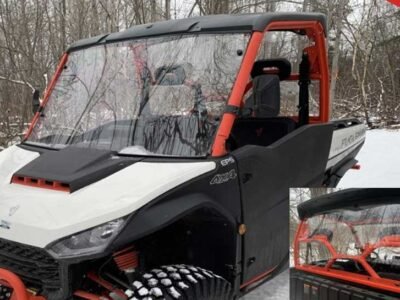Sleeping pads provide convenience in two ways: provide extra padding when you sleep and insulate the cold ground. Although you may not give attention to it, a sleeping pad will help you have a good night’s sleep. Sleeping pads come in various sizes and shapes.
You can choose from several brands, including MEC, Exped, Therm-a-Rest, and Big Agnes. Yet, how will you know whether you pick the perfect sleeping pad? Choosing the correct sleeping pad depends on a few points:
- When do you go camping?
- Do you sleep on the side? Or on your back?
- Do you consider the pack weight? How about space?
Here are the things you may want to consider when selecting a sleeping pad:
- Type of Sleeping Pads – There are different pads to choose from, including air mattresses, foldable self-inflating pads, foam pads, and inflatable insulated pads. Choose the best sleeping pad that suits your needs.
- Sleeping pads’ Features – Size, comfort, portability, and insulation are the features we must look for before purchasing a good sleeping pad. These features are vital; therefore, you can choose the appropriate sleeping pad that suits your needs.
- R-Value – R-value marks the sleeping pad material’s ability to resist heat flow. The higher the R-value, the more excellent the insulation. It is significant in choosing a sleeping pad since you want to enjoy your camping even in the cold seasons.
Types of Sleeping Pads
Air mattresses
These types of sleeping pads are options when you go car camping. They utilize sealed chambers full of air to give a comfortable sleeping surface, yet there is no insulation. You will need to have a pump to inflate them.
- Pros: Comfy, available in different sizes that work with the regular beddings, and you can change the firmness by adjusting the air or removing it.
- Cons: Big, bulky, give low insulation, not ideal in the winter, and require a pump.
- Best for: You can use it for car camping as a car mattress in a warm season, as they do not keep much heat.
Self-inflating sleeping pads
These sleeping pads use a layer of open-cell foam inside a fabric shell. Once the valve is open, air slowly fills the spaces to inflate the sleeping pad. For a firmer pad, you can fill more air into the pad.
- Pros: Give moderate comfort, offer good insulation, cheaper than air-filled sleeping pads.
- Cons: They are heavier and less compact than the air-filled ones, less firm than foam sleeping pads. On the other side, they are easy to repair and firmer than the air-filled sleeping pads.
- Best for: Backpackers or campers who enjoy durability and comfort, yet do not want to spend a lot.
Closed-cell foam sleeping pads
These closed-cell foam sleeping pads are dense with tiny air pockets. They do not compress; thus, you need to fold or roll them when you take them.
- Pros: Economic, lightweight, and heavy-duty because you do not have to worry about leaks and holes.
- Cons: Big, does not feel very soft when you lie on them and give moderate insulation.
- Best for: People who camp on a budget, ultralight backpackers and hikers, and anybody who emphasizes durability. Besides, you can use them as handy seats because they do not absorb moisture.
Inflatable insulated sleeping pads
These types of sleeping pads offer more insulation than air mattresses because they have an insulating element inside. This material can be reflective, or it can be synthetic fill.
There are several levels of insulation available. Thus you can select an inflatable-insulated pad that best suits the temperature you will be camping in. You can use a pump to inflate it, or you can use your breath.
- Pros: Convenient, packs down tiny, lightweight, gives good insulation, and you can adjust the firmness by adding or removing air.
- Cons: Pricey, less long-lasting, and pads with reflective material can make a loud wrinkled noise.
- Best for: Backpackers or car campers who desire a warm and comfortable sleep; camping in cold weather.
These are the top 4 features of sleeping pads that you must look for:
Size
The size of a sleeping pad is vital so you can sleep well in your tent or car. A sleeping pad that’s narrow or short in size will not only be a hassle but will not give you proper insulation. The typical length of a sleeping pad is 72 inches, up to 75-78 inches. Select the sleeping pad that will best suit your height.
Comfort
Although sleeping pads will never replace the comfort that your bed at home is giving you, you can still have one that can give you a goodnight’s sleep. There are two sleeping pads that you can choose from if you want different levels of comfort.
- Foam: While foam sleeping pads are way cheaper and provide good insulation, they are a bit stiffer.
- Inflatable: Whether you look for self-inflating or manual, it offers great insulation and complete comfort.
Portability
While comfort is essential, if you cannot put a sleeping pad in your bag, it is useless. Thus, make sure to consider portability whether you go camping or backpacking.
Inflatable pads are compact when rolled. Yet, they are heavier than the other sleeping pads.
Foam pads are more durable and lightweight. Therefore, they are best for backpackers and campers.
Insulation
Insulation keeps you warm at night as the cold breeze goes into your tent and a great sleeping pad traps the air between you and the ground. The air heats your body that keeps you warm and comfortable during the night.
Insulation is something we do not consider when we buy a sleeping pad. Foam in a closed-cell sleeping pad or an inflatable sleeping pad can actually warm your body heat and insulate you from the cold ground.
You can check the R-value to determine how well your sleeping pad can keep you warm.
What is R-value?
R-value tells the ability of a sleeping pad to insulate you from the ground. It is measured on a scale from 0-6. The higher the R-value, the warmer it is. R-values of 3 and 4 are best for three seasons. If you want to go camping in the winter, choose a sleeping pad with an R-value of 4-5 or higher.
Choose the Sleeping Pad that Fits You
Choosing and purchasing an excellent sleeping pad is crucial to having the best sleep while on a backpacking or camping trip.
To ensure you will get the best out of your hiking adventure, try to consider the type of sleeping pad, the features it offers, and its R-value. Ensure you get a sleeping pad that matches the weather, the season, and your needs. With that, camping or backpacking will be more comfortable and easy.


















Comments